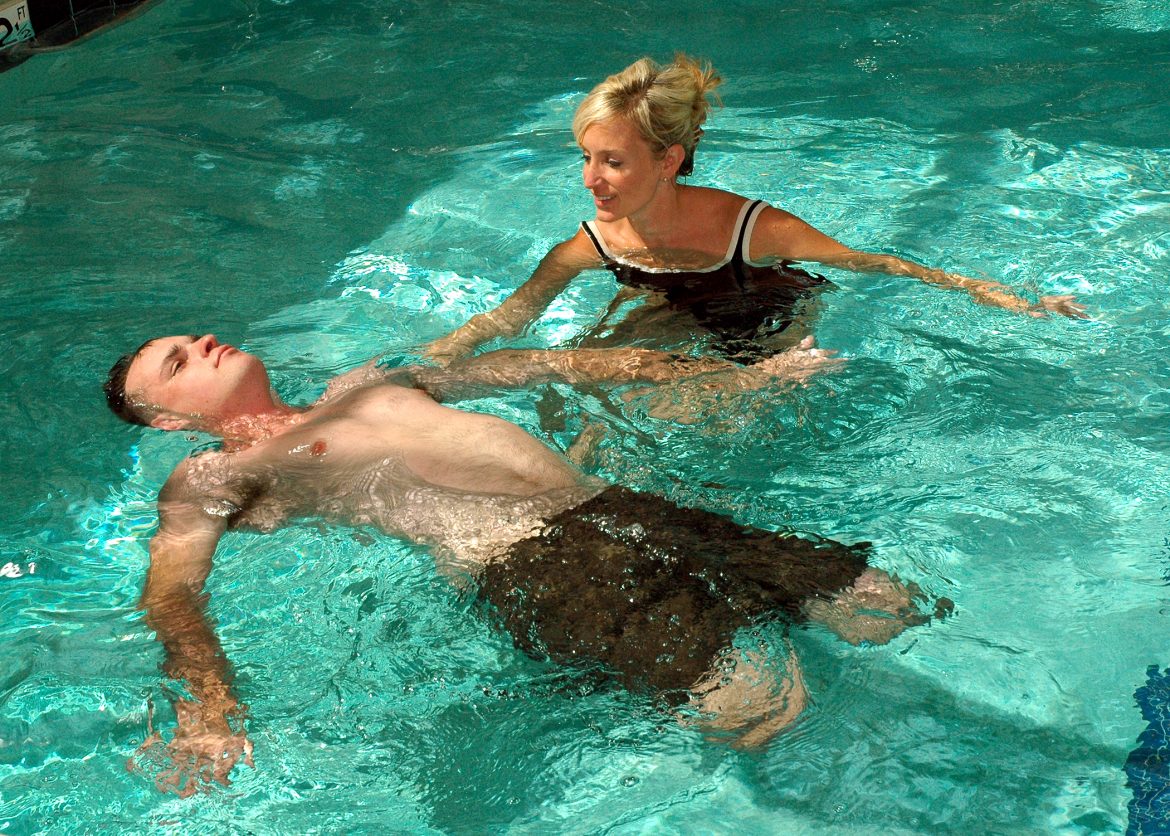By: Lynette Lombardo, OTR/L, CLT, LMT
The question that many people ask me is:
“What is an Occupational Therapist?”
… often followed by “Do you help people find jobs?”
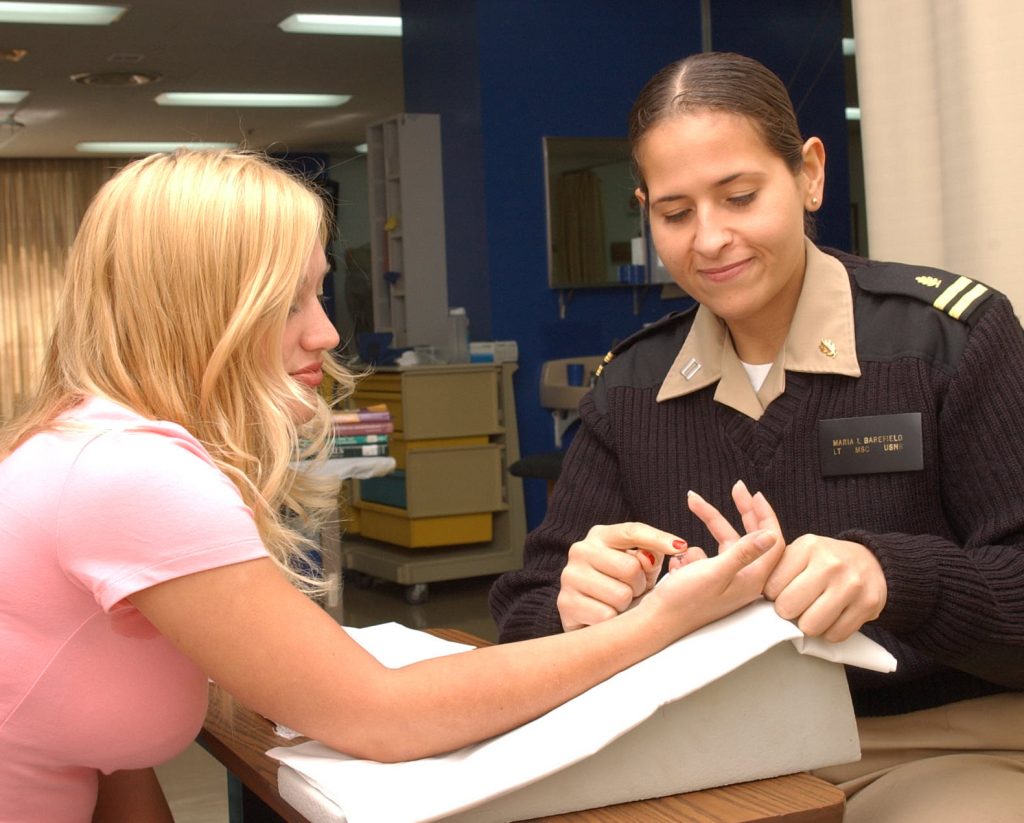 The word, “occupation” in Occupational Therapy is what can be misleading. Or is it? “Occupation” in Occupational Therapy refers to the patients’ “occupations” of everyday living, such as eating, dressing, brushing teeth, getting in/out of bed, and in/out of the tub. Occupations do not need to only take the form of “self-care” such as those just listed, but can also refer to cooking, cleaning, recreational activities, and work-related tasks.
The word, “occupation” in Occupational Therapy is what can be misleading. Or is it? “Occupation” in Occupational Therapy refers to the patients’ “occupations” of everyday living, such as eating, dressing, brushing teeth, getting in/out of bed, and in/out of the tub. Occupations do not need to only take the form of “self-care” such as those just listed, but can also refer to cooking, cleaning, recreational activities, and work-related tasks.
In other words, an Occupational Therapist (OT) is concerned with and addresses how a patient’s injury or illness is impairing the functioning of their life. The OT practitioner looks to make the patient independent again. And if the patient cannot be totally independent, the OT looks to make the necessary modifications so that the patient can be as independent as possible. The OT’s goal is to have the patient live a full life. Toward this end, the OT collaborates with the patient (and family and other involved professionals as needed) to determine and help the patient meet their goals. As an Occupational Therapist, we take a holistic perspective and look not only at the patient’s physical status, but their emotional, psychological, and social status as well.
Occupational Therapy Throughout the Lifespan
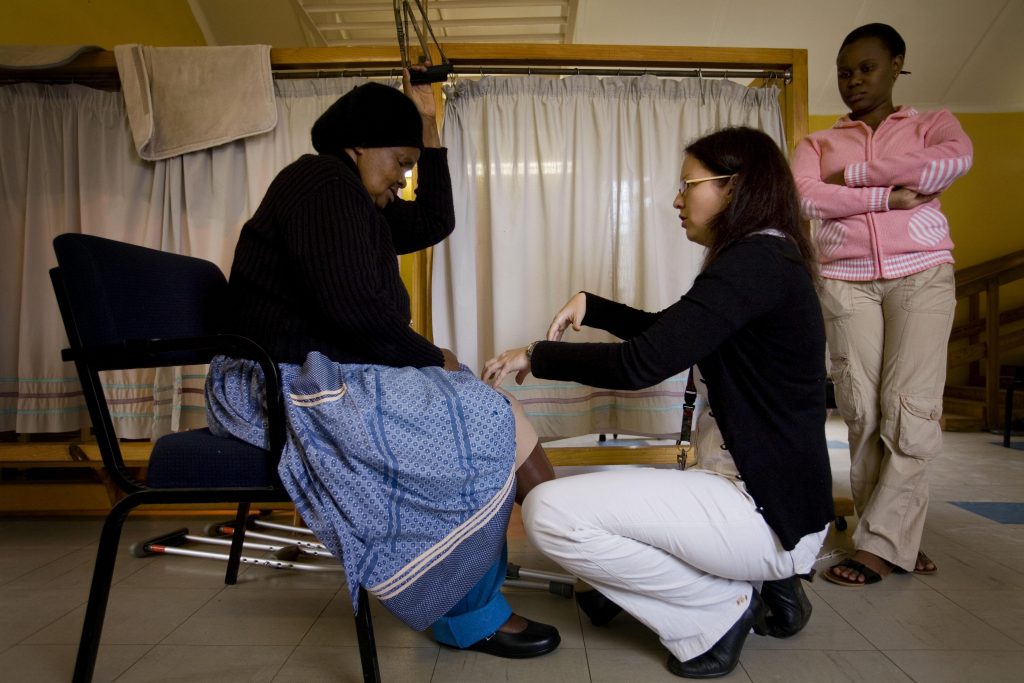 Occupational therapy is multi-faceted and can help people across their lifespan. Following are two examples of the use of occupational therapy in various age groups.
Occupational therapy is multi-faceted and can help people across their lifespan. Following are two examples of the use of occupational therapy in various age groups.
Early Intervention, 0-3
Critical brain development occurs in the first three years of life. If children are not reaching developmental milestones (pediatricians and other healthcare professionals can help caregivers determine if there are delays) it is imperative that children are provided the necessary attention through Early Intervention (EI) services. OTs can help with children who have developmental delays. Babies and toddlers can have difficulty with the following: poor endurance, weak muscle tone (e.g., for sitting up, rolling over), delayed grasp, decreased eye-hand coordination, decreased sensory skills (e.g., hyper/hyposensitivity to stimulus in the environment), and delays in cognition.
Preschool Age Children
Once the child turns three, they are no longer eligible for Early Intervention (EI) services. Parents may have their child evaluated for the special education system in their school district. Children at this time may still have developmental delays in:
- self-care (e.g., difficulty dressing, using utensils)
- fine motor coordination (e.g., poor grasp of crayons, immature pencil grip, poor scissor skills, fatigue when performing fine motor skills)
- gross motor skills (e.g., bumps into things, difficulty learning novel motor tasks)
- visual perception (e.g., difficulty with puzzles, decreased visual memory)
- behavior (e.g., disorganization, decreased attention-unable to sit in group for a period of time, difficulty getting along with peers)
Unfortunately, with strict requirements, some children “fall through the cracks” and are denied Occupational Therapy services. Parents/caregivers can access Occupational Services with private practitioners through their insurance. However, I urge parents to continue to also seek treatment for their children through their school district. Delays can affect school performance and the physical and psychological well being of children.
Occupational Therapy Across Various Injury and Disease States
Occupational therapy is multi-faceted and can help people with many injuries and diseases. Following are a few examples of the application and usefulness of occupational therapy for people with various injuries and disease states.
Autism
OTs can assist individuals with autism to help them participate more fully in their Activities of Daily Living (ADLs) such as: dressing, feeding, community mobility, safety, and employment. With this population, OTs are usually in constant communication with the individual’s caregivers/family and teachers. This gives the OT a clear sense of the individual’s daily life and how they are functioning. Within this community, the OT can work on adaptations such as special utensils and computer software to help the individual be more successful with their everyday activities.
Neurologic Conditions
Patients can also be referred to an OT after a neurologic trauma/insult such as a: CVA (cerebrovascular accident / stroke), spinal cord injury, Parkinson’s disease and Guillain-Barre Syndrome. OTs assess these patients for deficits in, but not limited to, balance, strength, coordination and cognition.
Orthopedic Conditions
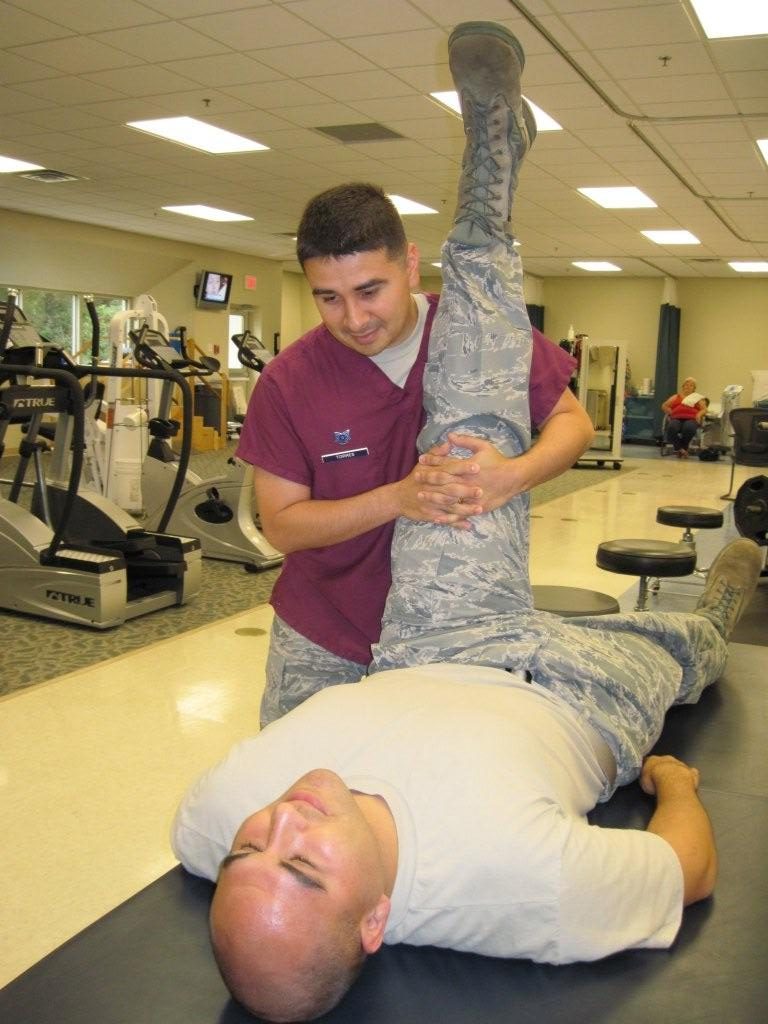 One of the major areas of OT work is with musculoskeletal injuries. Although the OT can treat any region of the patient’s body, OTs are specialistis in working the upper extremity. The most common upper extremity injuries that OTs treat are: carpal tunnel, tennis elbow, frozen shoulder, strains, and sprains. However, patients may also have bone fractures, infections, nerve and tendon lacerations, and amputations of the upper extremity. OTs assess for deficits such: decreased range of motion (ROM), strength, impairments in nerve function (paresthesia such as numbness and tingling), pain, and swelling.
One of the major areas of OT work is with musculoskeletal injuries. Although the OT can treat any region of the patient’s body, OTs are specialistis in working the upper extremity. The most common upper extremity injuries that OTs treat are: carpal tunnel, tennis elbow, frozen shoulder, strains, and sprains. However, patients may also have bone fractures, infections, nerve and tendon lacerations, and amputations of the upper extremity. OTs assess for deficits such: decreased range of motion (ROM), strength, impairments in nerve function (paresthesia such as numbness and tingling), pain, and swelling.
Lymphedema
Lymphedema is abnormal swelling that can occur in the abdomen, limbs, chest, breast, head, or neck. The most common cause in the United Stated of lymphedema is lymph node removal from breast surgery. However, patients can also have a congenital lymphedema, or their lymphatic system could have been compromised from a trauma. Treatment for lymphedema might include: compression wrapping, manual lymph drainage, compression garment use, and lymphatic pumps.
Oncology
Cancer and cancer treatments can cause different physical and cognitive impairments. It can also affect a person’s emotional state as well. As OTs, we can assess any deficits the patient has, such as: weakness, neuropathy, impaired balance, fatigue, and cognitive issues. If the patient reports any deficits that are beyond or out of our scope of practice (for example, psychological), we can refer the patient to the appropriate practitioner. For breast cancer patients, they can be assessed both pre- and post-surgically. Prior to surgery we can assess posture, strength and ROM. Baseline measurements on the side where the surgery will be performed will be obtained as well (for example, surgery on one side can increase their risk for lymphedema in that limb).
Mode of OT Care
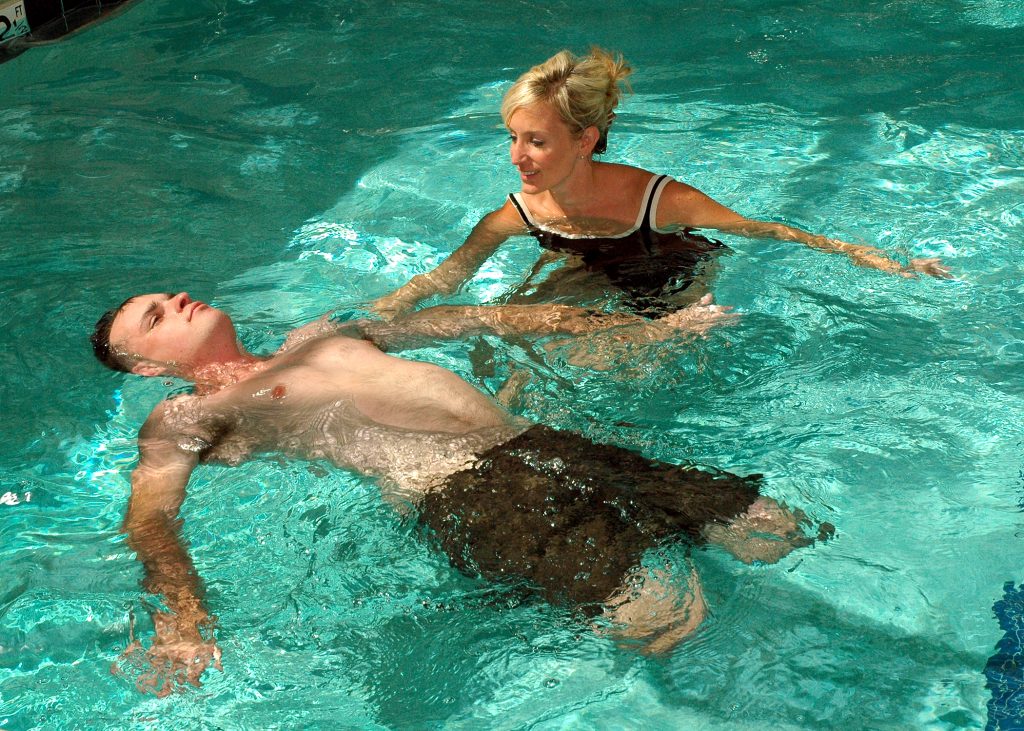 OT patients can be seen inpatient, outpatient, or in the home-care setting. Regardless of the setting, OTs continually assess the patient’s deficits and look for areas of improvement. Goals are set that are both measurable and attainable and adjusted accordingly. One of the most important aspects of OT is the continual education of the patient and family/caregivers. If patients are unable to return to their pre-morbid (pre-injury/pre-surgery) status, it is important that the patient and their caregivers are educated on safety resources available (such as home care equipment). The goal is to make the patient as independent as possible with safety considerations.
OT patients can be seen inpatient, outpatient, or in the home-care setting. Regardless of the setting, OTs continually assess the patient’s deficits and look for areas of improvement. Goals are set that are both measurable and attainable and adjusted accordingly. One of the most important aspects of OT is the continual education of the patient and family/caregivers. If patients are unable to return to their pre-morbid (pre-injury/pre-surgery) status, it is important that the patient and their caregivers are educated on safety resources available (such as home care equipment). The goal is to make the patient as independent as possible with safety considerations.
Keep in mind that no matter the diagnosis, OTs continually assess patients on how their injury/impairment is affecting their:
- Physical activities of daily living (ADL)
- Cognition (memory, judgment)
- Psychological state (depression).
At times, physicians can lose sight of these important components, so it critically important for the OT to be present to provide accurate and thorough assessment and treatment for their patients.
(Click here for the blog post article: What is Manual Therapy?)


